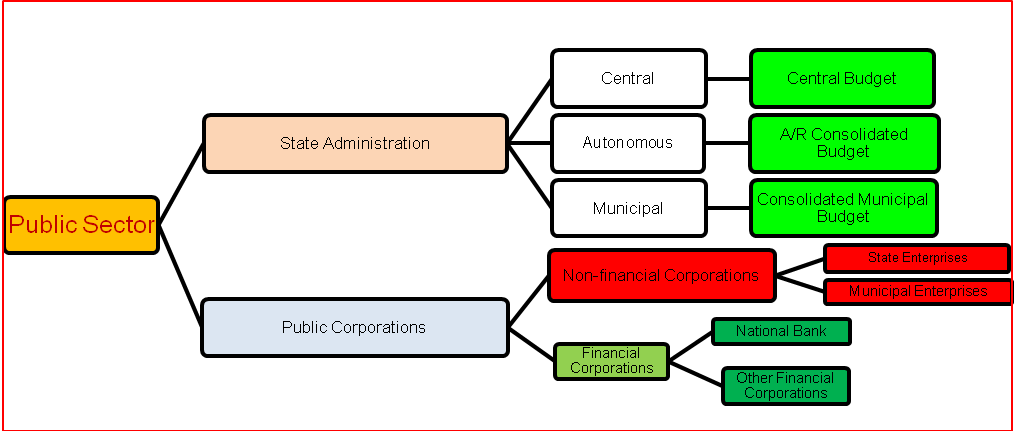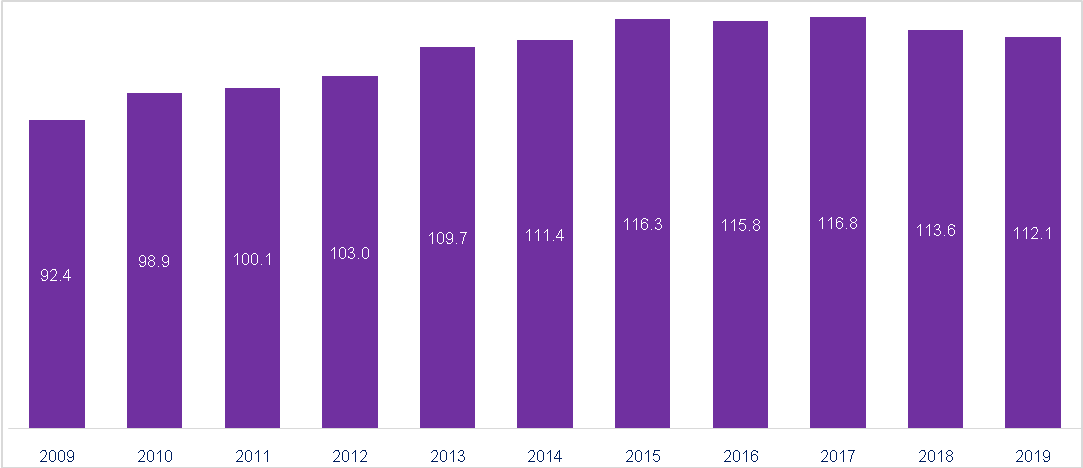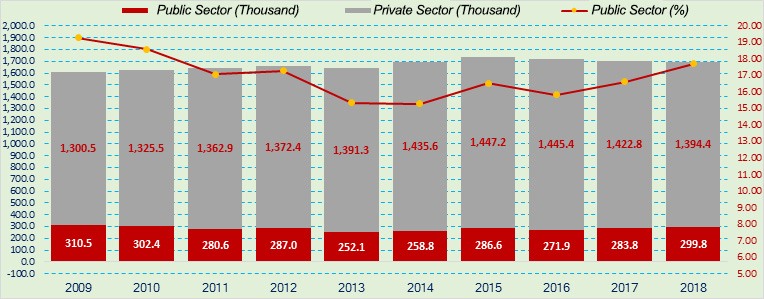Resume: Irakli Abesadze speaks about only one part of those employed in the public sector whose salaries are provided from the state budget. This component encompasses all public servants employed in state budget spending institutions, notwithstanding their rank and status. Therefore, this component does not imply only “officials” because given the common definition, the term “official” mostly refers to people with government-political and political positions and not low-level employees who in fact constitute the bulk of the aforementioned indicator.
The estimated figure of people employed in state budget spending institutions for 2019 is 112,100 in total. This figure was characterised with an annual growth trend throughout 2010-2015 whilst it decreased for the first time in 2016. In regard to the figures for 2018-2019, they decreased as compared to the previous year. However as compared to 2012, which is the year named in the MP’s statement, the estimated figure of employees in state budget spending institutions in 2019 is 9,100 more.
As mentioned previously, the figure of employees given in the state budget includes public servants of all positions who are employed in the organisations which receive funding from the state budget and this figure is only one part of the public sector. This figure does not include employees who receive salaries from the budgets of either municipal or autonomous republics. In regard to the public sector in total, the nominal and relative figures of employment in the public sector have been on the rise in the last years.
Analysis
As stated by Irakli Abesadze, MP: “In accordance with the state budget indicators, there are 11,000 more officials to carry out the same functions (execution of budget programmes) today as compared to 2012.”
In his statement, the MP refers to only one part of the public sector (the green square on Graph 1); that is, spending institutions under the state budget. This includes the total amount of employees in the ministries, LEPLs under those ministries as well as other institutions in charge of state budget allocations. This figure implies approved and estimated figures which were taken into account whilst drafting the state budget. However, of note is the issue related to the term “official” which in public statements is mostly perceived and suggested as high-ranking public servants. For instance, government and political office-holders, first-rank figures heading primary structural units, etc. In turn, the number mentioned by the MP encompasses public servants of all ranks and it is not only about high-ranking individuals.
Graph 1: Structure of the Public Sector

In accordance with the state budget plan, employees in state budget spending institutions amount to 112,100 which is 9,100 more as compared to 2012. In 2012, the number of employees in state budget spending institutions was 103,000.
Graph 2: Number of Employees in State Budget Spending Institutions (Thousand Persons)

Source: State Budget, Ministry of Finance of Georgia
The growth of employees in state budget spending institutions started in 2010 and reached 98,900. In 2017 this figure reached 116,800 but started to decrease in subsequent years. Of note is that the increase in state budget figures is marginally related to the growth of employees in central apparatuses of the ministries. This growth is largely related to the LEPLs which were established under the law in the same period.
Apart from a verification of the MP’s statement, of interest is to analyse the public sector employment figures in general. In turn, the public sector in its entirety includes state administration organs and public corporations. In 2018, the number of public sector employees increased by 16,000 as compared to the previous year and now constitutes 299,800 persons occupying a 17.7% share in the total employment.
Graph 3: Employment in Terms of Institutional Sectors (Thousand Persons, %)

Source: National Statistics Office of Georgia
The amount of public sector employees in 2012 was 287,000 which was 17.29% of the total employment. Since 2013, however, public sector employment has sharply decreased. In particular, the amount of public sector employees was 252,100 (15.34% of the total employment) in 2013 and 258,800 in 2014 (15.28% of total employment). However, the absolute and relative figures of public sector employment have been rising since 2015.








